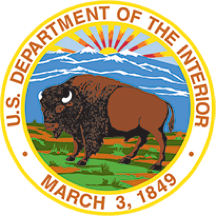Data.gov launches metrics tools
New Data.gov metrics dashboard provides information on most visited datasets, most downloaded files, most clicked outbound links, top search terms, and more.
Requirements for delivering a digital-first public experience —Learn how to implement 21st Century IDEA to design and deliver better websites and digital services.
Understanding the Digital Analytics Program —The Digital Analytics Program (DAP) offers advanced, easy web analytics for federal agencies.
An introduction to domain management —A .gov domain instantly conveys credibility and trustworthiness, and proper domain management practices ensure that your website is secure …
An introduction to search —Learn why search functionality is an important component of federal websites, and discover how to add a search function to your website.
An introduction to digital governance —Learn why governance is essential to digital experience.
Improve written and verbal communication to make government more effective.
Explore methods of service delivery that improve customer experience in government contact centers.
Expand and improve digital content in languages other than English.
Promote the use of plain language to provide better service to the public.
Improve social media outreach and performance.
Create better user-centered products for the public.
Make better decisions using web analytics and other optimization strategies.
Create a better online experience for the public alongside government web content managers.
Innovative work, news, and ideas from people and teams in government
New Data.gov metrics dashboard provides information on most visited datasets, most downloaded files, most clicked outbound links, top search terms, and more.
User feedback is key to creating great digital products, but limited resources can hinder research efforts. Hallway testing provides a quick, useful solution. By conducting informal interviews, the Open Data, Design, and Development team at the Department of the Interior gathered insights to improve navigation to state and offshore region pages on the Natural Resources Revenue Data website. After testing prototypes, the best option was implemented, streamlining access white minimizing resource use. The team’s next steps include monitoring performance, evaluating the addition of maps on select pages, and continued hallway testing.— via Office of Natural Resources Revenue

Discover how USA.gov tailors its benefit finder experience for both English and Spanish-speaking users through culturally nuanced content. Through dual-track language research, a bilingual support team, and A/B testing, USA.gov ensures that more users receive relevant, empathetic, and user-friendly content. The USA.gov team also identified and addressed recruitment challenges to interatively improve its ongoing research processes.— via USA.gov

To increase transparency, the Login.gov team publishes a program roadmap that lays out their upcoming initiatives.
Memo M-23-22 from the Office of Management and Budget provides guidance to federal agencies on delivering a digital-first public experience. To quantify its compliance with the memo, the Open Data, Design, and Development team at the Department of the Interior created and conducted a self-assessment of its digital products. The team used a scoring spreadsheet to measure compliance across categories like accessibility, design consistency, and mobile responsiveness. The results helped the team develop a plan to prioritize improvements and engage with leadership for support on other initiatives.— via Office of Natural Resources Revenue

User research is an important part of customer experience transformation. Different types of research require different approval under the Paperwork Reduction Act (PRA). Through seven case studies, the U.S. Digital Service shows how agencies conducted valuable user research that did not require PRA approval and successfully integrated findings into their projects. Their work illustrates how thoughtful user research transforms delivery of services and helps agencies build trust in government.— via U.S. Digital Service

Over the past decade, the U.S. Digital Service (USDS) has collaborated with more than 30 federal agencies to create user-friendly, reliable, and seamless digital experiences. Their work prioritizing human-centered design and engineering includes improving services for veterans with Veterans Affairs, launching the Internal Revenue Service Direct File Pilot, and supporting the Centers for Disease Control and Prevention during the COVID-19 pandemic. Looking ahead, USDS remains committed to building trust, fostering innovation, and scaling digital capacity across the federal government, ensuring better service for all Americans.— via The White House

The Department of Justice recently marked the 24th anniversary of Executive Order 13166, which aims to improve access to federal services for individuals with limited English proficiency (LEP). Its Civil Rights Division reviewed language access plans across federal agencies, emphasizing progress in hiring and staff training, improving language assistance services, and expanding multilingual content. The department is committed to eliminating language barriers in federal programs, improving communication and access for all communities.— via Department of Justice

In September 2024, Benefits.gov will be discontinued, with its services and information moved to USA.gov and USAGov en Español. This change, which aligns with Executive Order 14058: Transforming Federal Customer Experience and Service Delivery to Rebuild Trust in Government, aims to create a seamless, user-friendly experience for accessing government benefits in both English and Spanish. The new platform, with a focus on equitable access to information, will feature improved navigation and benefit-finding tools.— via General Services Administration

Digital.gov
An official website of the U.S. General Services Administration